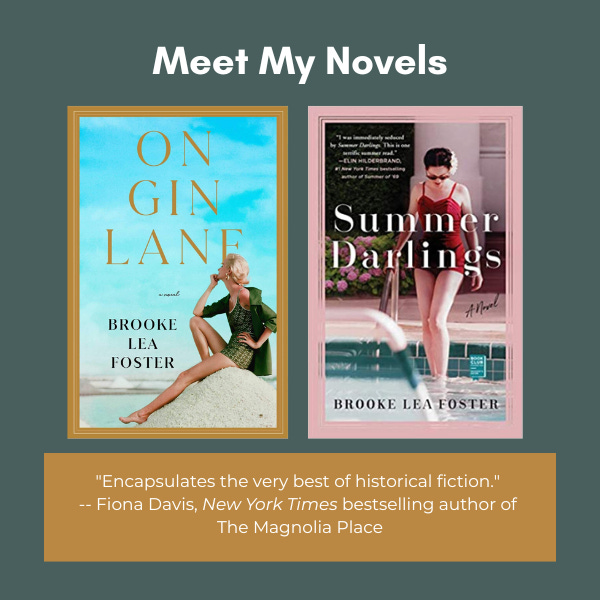The Curious Matter of Making Readers Cry
And other notes about the very complicated process of writing from the heart.
I have a good friend named Molly who I often buddy read with. We have mostly similar taste in novels, but while I’m weepy and cry at just about everything (Hamnet, Lessons in Chemistry, Our Missing Hearts), she’s never EVER cried while reading a book. “I really just can’t imagine a book ever causing that reaction,” she told me.

This is endlessly fascinating to me because part of a writer’s job is to move people. Now Molly will tell you that she feels the emotions of the characters that she’s reading — she’ll even be deeply moved — but the wellspring of sorrow that lingers in me after reading a sad scene never brings her to tears. I often think: The day that I write something that makes Molly cry is the day I’ve succeeded as a writer.
This weekend I’m teaching a workshop about the power of writing from the heart, so I’ve been thinking more deeply about constructing literary scenes that pack an emotional wallop. Not to mention that my fourth book starts with a family secret that weighs down my character’s hearts from the start. Obviously, the first draft of a novel is a mess, and I know that anyone reading the earliest stages of my novel wouldn’t feel a thing just yet. But as the writer, I already know exactly what they’re feeling, and I’m layering these emotions into my pages each and every day trying to get closer to the truth.
After reading ON GIN LANE, I had several readers tell me that they teared up while reading one of two parts: the first, when Lee gets enough courage to leave her fiance, and the second, when she and Starling, an older photographer she’s been studying under, say goodbye after a summer working together. I found that insight satisfying because those were the two scenes that tied me up in knots. I remember crying every time I revised the latter one (embarrassing but true!) because the women had changed each other so much over the course of the story and reading the dialogue choked me up. Suddenly, I felt like I was saying goodbye to them, too. It’s a funny thing when you’re crying at a story you made up in the first place. Being an author can be weird like that.
Still, as a writer, I never *really* know if a scene is working until someone tells me how it made them feel. Whenever I hear that a particular piece of writing has moved someone, my own heart does a little dance. I mean, I became a writer, in part, because as a kid I wondered at the magic of authors who could make me cry, even though they would never ever meet me. Bridge to Terabithia was an absolute tear jerker, so was Where the Red Fern Grows, and both made me wonder how a writer managed to keep me turning pages after making me reach for a tissue. Here was a complete stranger writing somewhere faraway completely unknown to me who had somehow wormed inside my head and hollowed out my heart. Pretty cool, right?
Yes, at least to me, but now I know that constructing those kinds of heartbreaking or touching scenes isn’t easy. They make for long hard days at the computer, and they’re more taxing than, say, plot development. I have to inject my whole heart into whatever is happening in scene, whether it’s rage or depression or courage or love and pretty much become whatever my character is. Which can get a little cray-cray.
For example, last year I had to write a scary scene in my third book. It took place at night on a boat in dark water, and to write it, I had to channel all of the things I would be terrified of in a moment like that. Meaning, I couldn’t write the scene unless I put myself in it, and this scared me silly. But it’s similar when you’re writing a scene centering around a character reaching an emotional climax; if you don’t put yourself in her shoes and allow yourself to get in the weeds of what she’s thinking and feeling, you’ll never capture your reader’s heart.
Over the years, though, I’ve come to rely on certain tricks to get me into “the feels” — because if I can feel big, then I’ve always believed the reader would, too. Here’s how I get ready for the biggie emotional scenes.
Sad Songs Work Wonders
I have certain songs that I listen to over and over when I’m writing a scene that I want to evoke a feeling. In SUMMER DARLINGS, I relied on the song “This Town” by Niall Horan to nail a scene where my main character, Heddy, is trying to find the courage to approach a man she has a crush on. She’s so shy, and I kept hitting repeat on Spotify as I found just the right words in my manuscript to bring the two characters together with tenderness. Whenever I wrote about the heartbreak between two old friends in that same novel, I listened to Adele’s “When We Were Young.” You can’t find a better song about two people changing and trying to move on from one another. Adele is a master at getting me to reach into my inner depths.
Free Write in First Person
I learned this strategy from my writing teacher Pat Dunn (who has wonderful novels for you to check out), and I use it repeatedly. I write all of my novels in close-third, meaning that the book is written from a narrator’s perspective, and at times, there’s too much distance (while writing rough drafts) between me and a character. To get into the head and heart of Lee in a pivotal scene in ON GIN LANE, I would sometimes stop working on the novel, open a blank WORD document and just type out a free write about how she was feeling in her own words. Every time I’d end up with a deeper sense of what was motivating her, what was holding her back, what she really wanted. Think of it as mining for deeper emotion that maybe you can’t see when you’re the narrator. When you’re done, you can switch back to third person and input the new discoveries into the appropriate parts of the book.
Watch emotional scenes in movies, Re-read scenes in books
I always have this desire to watch “The Talented Mr. Ripley” (starring Gwyneth Paltrow and Matt Damon) right before I start writing a new book. First of all, it’s set at mid-century, the same time period that I write in, but it’s also full of mystery and glamour and intrigue and I always finish the movie feeling excited to tell another great story.
But I also reread scenes in books that I love, too, to remind myself how authors have moved me. There are so many great scenes in Mary Beth Keane’s novel Ask Again, Yes that I love to pick it up occasionally to remind myself how she constructs the novel so artfully. By planting so many details about the fictional family early on, you can’t help but weep later when tragedy ensues. In Emma Straub’s This Time Tomorrow, I cried multiple times since she taps into a reader’s own nostalgia for childhood, while portraying a daughter who goes back in time to her teenage years to interact with her much younger (and healthier) father. Such a great story.
Change the Font
I’ve been doing this since I was a young journalist. If you take any piece of writing you’re working on and make the font look different, you’ll feel like you’re coming to your words with fresh eyes. Times to Helvetica. Comic Sans to Courier. You can try changing the size of the text as well. It will make you feel as though you’re reading an entirely new book, which helps identify the emotion powering through the pages — or missing in the writing entirely.
Lastly, Give It Time
At the end of my third book, there’s a point where my heroine is coming to terms with a longtime friendship and she’s preparing to let go of some ideas she’s had about this friend. When I was writing the part of the novel, I constructed the chapter so that the emotion continues to build as you’re reading through the action. Suddenly, at the end of the chapter, my character has a very big insight that changes the way she sees everything in her life. When I was writing this, I really felt like I got the scene right. But after putting the book down for a month, I recently reread the chapter and I was disappointed to discover that it wasn’t working as well as I thought it was. Honestly, I’m grateful that I put it away for awhile. Otherwise, I would have thought it was in good shape!
In the future, maybe I’ll write a post about novels that made me cry. No, books that broke open my heart. Until then, I’m curious about you: When was the last time you cried while reading a book? Please leave a note in the comments. We love hearing from our subscribers!
Thank you for reading! xo





This was such an interesting read - so many great tips! I love the idea of free writing as a character in first person. It reminds of a 'hot-seat' thing we would do when we studied plays and you'd have to answer questions as the character to try and get inside their head. Always brought up interesting stuff and a great way to figure the characters out as a student - love the idea of doing it as a writer too. Also, I'm definitely a crier - books, films, songs, the occasional advert, a dog being a dog... (I know, painfully cool).
I really enjoyed reading about your process and also your book recommendations in this post. Any book that makes me cry is an automatic 5 star! You've made me want to watch the Talented Mr. Ripley again! I'm overdue for a rewatch. Have a great weekend :)